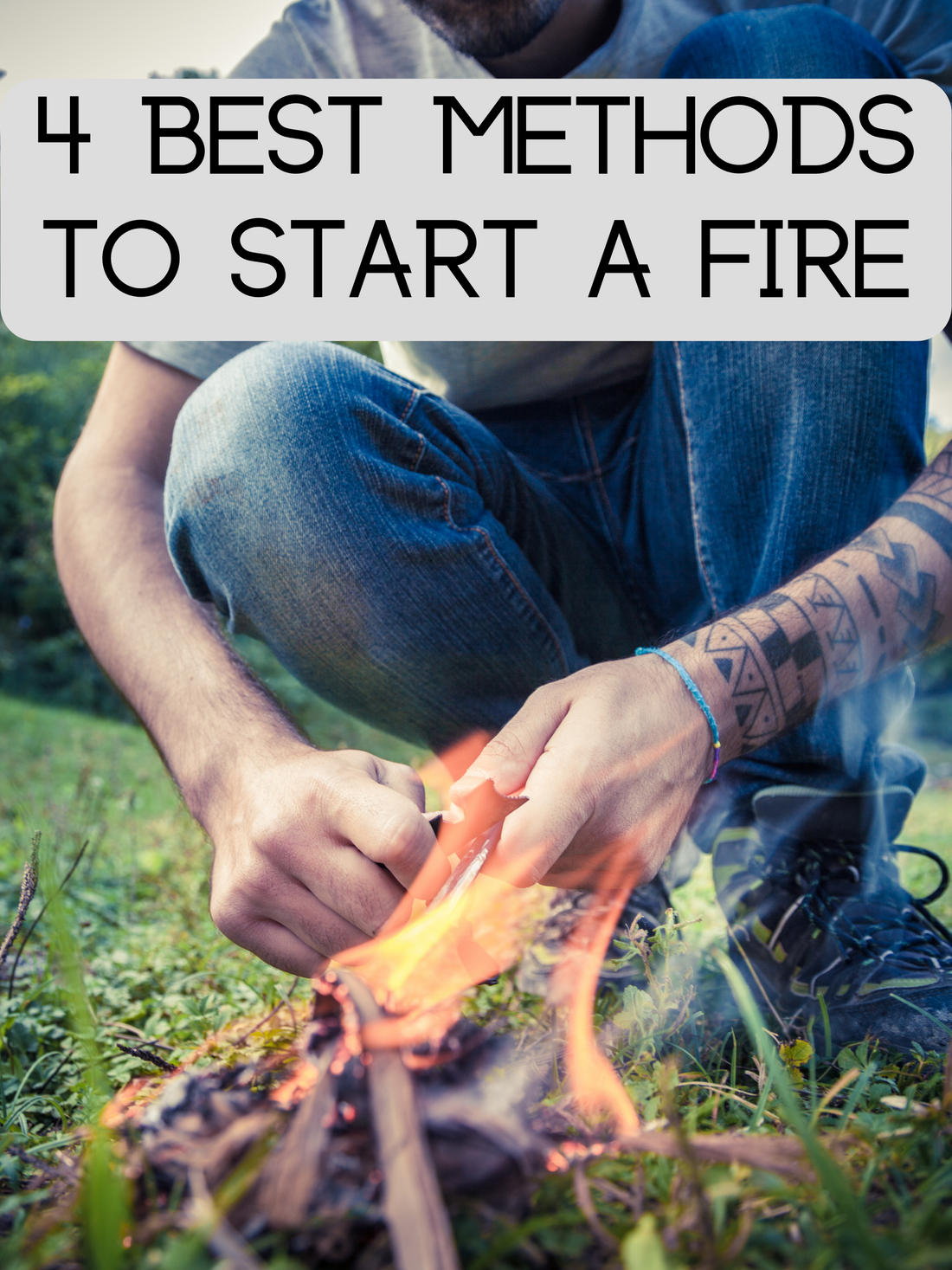
Starting a Fire: 4 Best Methods
Share
Starting a fire in the woods is an essential survival skill. Whether you are camping, hiking, or lost in the wilderness, knowing how to start a fire can make all the difference in your comfort and safety. In this instructable, we will go over the best methods of starting a fire in the woods.
Materials you'll need:
- A lighter or matches (preferably waterproof)
- Firestarter (cotton balls, dryer lint, or other flammable materials like Pyro Putty)
- Kindling (small twigs and branches)
- Fuel (larger pieces of wood)
- A container of water (to put out the fire)
Method 1: Using a lighter or matches. The most common and straightforward way to start a fire in the woods is by using a lighter or matches. It's essential to make sure that you have a reliable source of ignition. Bring extra matches or a backup lighter in case your primary one fails. Additionally, consider using waterproof matches or a waterproof lighter to ensure that you can start a fire even in wet conditions.
To start the fire, gather some dry leaves, grass, or other highly flammable materials as kindling. Place the kindling in a small pile, and use the lighter or matches to ignite it. Once the kindling starts to burn, add some small twigs and branches on top of the kindling. Gradually add larger pieces of wood to the fire to keep it burning.
Method 2: Using a Firestarter Another effective way to start a fire in the woods is by using a firestarter. A firestarter is a highly flammable material that ignites quickly and can sustain a fire. Some common firestarter materials include cotton balls, dryer lint, birch bark, and fatwood.
To use a firestarter, gather some dry leaves, grass, or other highly flammable materials as kindling. Place the kindling in a small pile, and then place the firestarter material on top of the kindling. Use a lighter or matches to ignite the firestarter, and once it starts to burn, add small twigs and branches on top of the kindling. Gradually add larger pieces of wood to the fire to keep it burning.
Method 3: Using a fire plow A fire plow is a friction-based fire-starting method that involves rubbing a stick against a piece of wood. This method requires some practice and patience, but it can be a reliable way to start a fire if you don't have any other materials available.
To use a fire plow, find a dry, flat piece of wood and a stick that fits comfortably in your hand. Cut a groove in the wood using the stick, and then rub the stick back and forth along the groove with firm, steady pressure. The friction will create heat, and eventually, the wood shavings will start to smoke. Once you see smoke, blow gently on the shavings to ignite them, and then add small twigs and branches to build the fire.
Method 4: Using a bow drill A bow drill is another friction-based fire-starting method that is similar to the fire plow. The main difference is that a bow drill uses a cord and a bow to spin the stick, making it easier to generate enough friction to create an ember.
To use a bow drill, you'll need a few materials: a flat piece of wood, a spindle (a straight stick that's about the thickness of your thumb), a bow (a curved stick or cord), and a handhold (a small piece of wood that you'll use to apply pressure to the spindle).
Start by carving a small depression into the flat piece of wood, called the fireboard. This will be where the spindle will sit. Next, make a small notch in the edge of the fireboard, next to the depression. This notch will be where the ember will form.
Place the spindle in the depression on the fireboard and use the bow to spin it rapidly. Apply downward pressure to the spindle with the handhold. As the spindle spins, it will generate heat and friction, eventually creating a small, glowing ember in the notch on the fireboard.
Once you have an ember, carefully transfer it to a pile of dry, fluffy materials, such as leaves or grass, and gently blow on it to create a flame. From there, add small twigs and branches to build the fire.
Tips for starting a fire in the woods:
- Always make sure that you have permission to start a fire in the area you are in. Check local regulations and restrictions before starting a fire.
- Choose a safe location for your fire. Make sure there are no low-hanging branches or flammable materials nearby, and clear a space at least three feet in diameter around the fire.
- Gather all of your materials before you start the fire. This includes kindling, fuel, and a container of water to put out the fire when you're done.
- Build the fire slowly and carefully, adding small pieces of kindling and fuel as needed.
- Never leave the fire unattended. Keep a close eye on it at all times, and make sure it's completely extinguished before leaving the area.
- When you're done with the fire, pour water over it and stir the ashes until everything is cool to the touch.
In conclusion, starting a fire in the woods can be a life-saving skill, but it requires some practice and preparation. With the right materials and techniques, you can start a fire in almost any conditions. Remember to always prioritize safety, follow local regulations, and respect the environment. With these tips and methods in mind, you'll be ready to start a fire and stay warm and safe in the wilderness.
